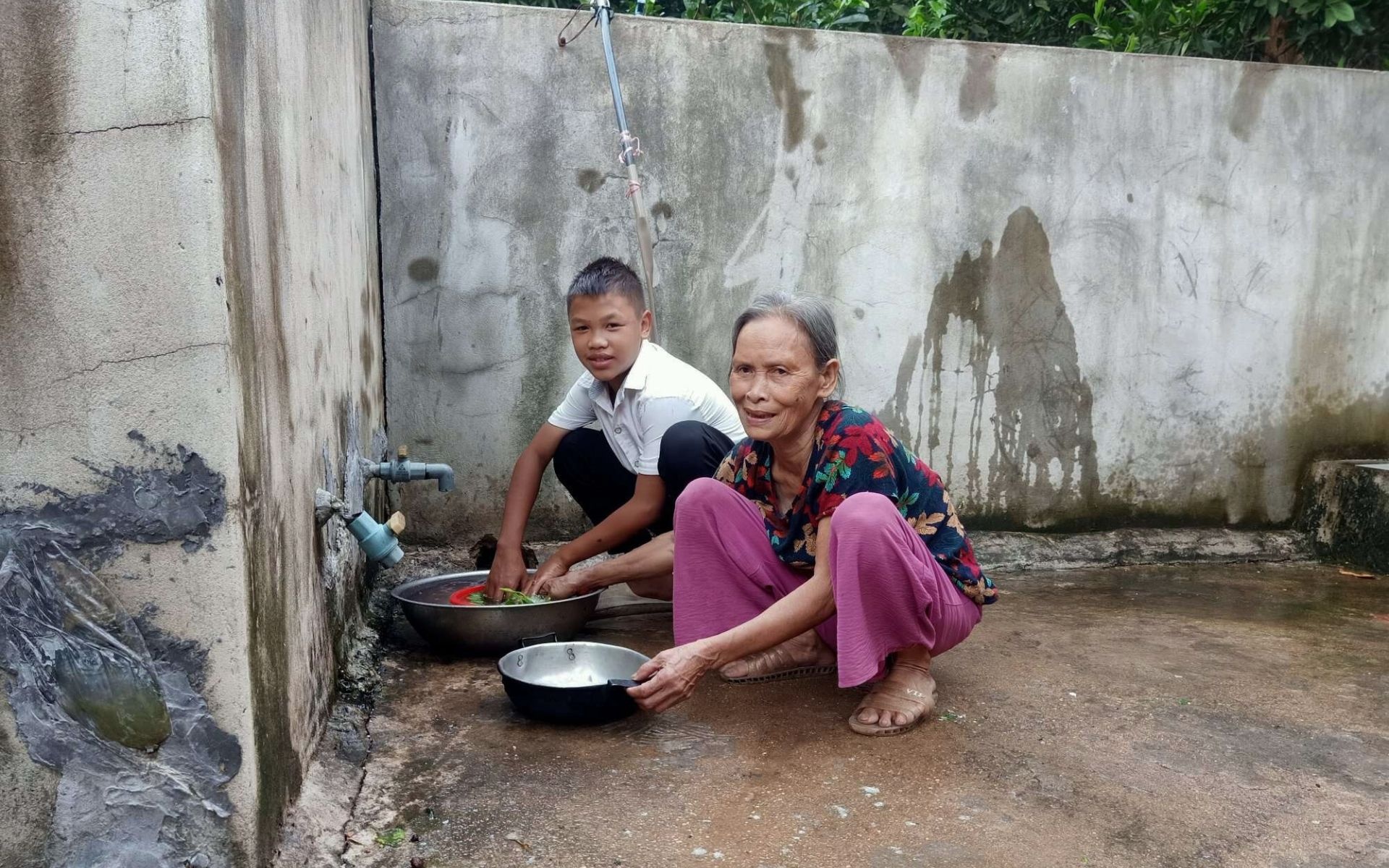“When water was rushing into our house, I was terrified because I couldn’t swim. All I could do was cry out to Grandma while she was scrambling to move the rice and electronics out of the water,” Anh Tuấn looked back.
Even though Anh Tuấn knew that he would be safe with all the safety measures in place before the flood, some memories would stay with him for the rest of time, especially with all the increasingly unpredictable rainstorms raging Thanh Hoá province lately.
A land of constant storms and heat
Upland terrains, limited resources, and extreme weather made Như Xuân and other mountainous districts of Thanh Hoá province a difficult land. Bakingly hot summers and five-month-long rainy seasons constantly challenged agricultural production, leaving people with scant options for smallholder crops and rice farming. In 2021, up to 36.1% of the households were classified as poor. People drifted away to find better opportunities, leaving villages where only older parents and children remained.
Anh Tuấn’s parents were among those people. He and his older sister had been staying with Grandma Tuyết since they were toddlers. Being the main breadwinner and taking care of two young children in her 70s was already not easy; Mrs. Tuyết was in constant worry whenever the rainy season came. The family’s shoddy shack and little crops, located in Như Xuân’s lowland, always got caught up in Quyền River’s water rising. “Back then, whenever the water rose, we were in really bad shape: food was scarce; our crops and livestock were destroyed; and the children’s schooling was disrupted. The big one would put her brother on an air mattress like a flooding raft to go to school,” Mrs. Tuyết recalled.
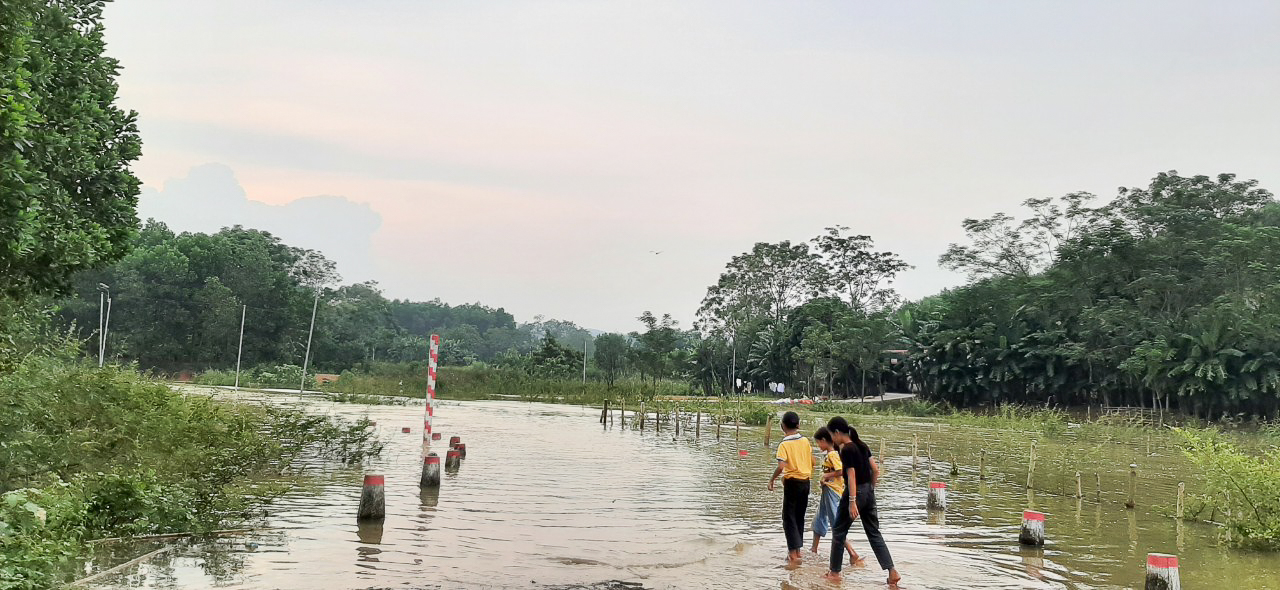
The prolonged rainstorms in September 2022 submerged more than 20 hectares of crops in deep water and isolated hundreds of households in Như Xuân district, Thanh Hoá province.
In recent years, Thanh Hoá province witnessed more and more unpredictable weather conditions. In 2020 alone, the province suffered from 27 classified “natural disasters,” causing 5 million dollars in damage (Thanh Hoá Province, 2021). Specifically, in Như Xuân district, the prolonged rainstorms last September not only submerged more than 20 hectares of crops in deep water but also caused serious landslides. In Mai village, heavy rain could flood the main road, isolating 98 households, including 136 children, from the village’s central resources.
Establishing resilience within the community
Understanding the region’s natural and social challenges, World Vision Việt Nam has been prioritising disaster risk reduction initiatives and emergency reliefs within its programs and activities in Như Xuân district. To enhance community readiness in response to the seasonal floods, World Vision collaborated with local partners to establish rapid response teams, which consisted of key community members, in target communes and villages. The teams soon became an essential force in implementing disaster risk reduction initiatives at grassroots levels.
Through World Vision’s regular training sessions and support for rescue supplies, such as life float, communication systems, and motorboats, the local response teams were able to anticipate and monitor any signs of extreme weather conditions and provide timely support for their communities. In addition, to ensure safe evacuation and timely emergency response, World Vision also supported local partners to open elevated routes in low areas like Mai Village. From then on, even when the main road was submerged in meter-tall water, people could still reach the Community Houses safely.
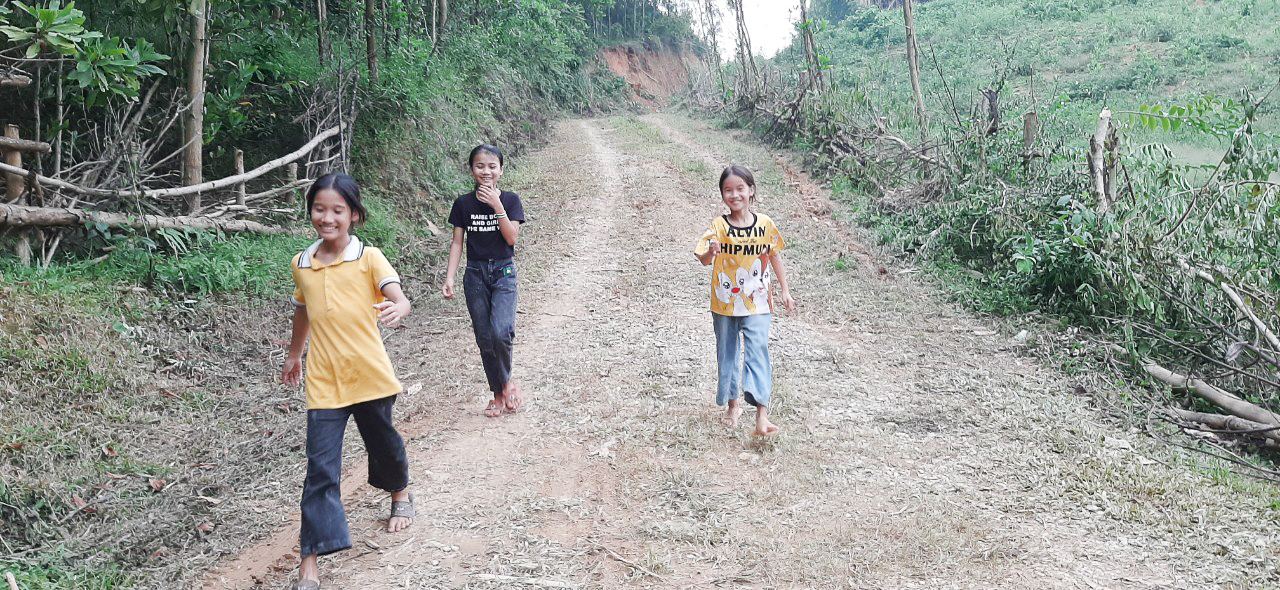
World Vision-supported “safe routes” helped ensure safe evacuation and traffic during the rainy season.
Along with enhancing community preparedness, World Vision Việt Nam also focused on ensuring the safety and well-being of the most vulnerable children and members in the target communes. Disadvantaged households that were located in low areas exposed to water rising and landslides received building materials and work days to reinforce their houses to better withstand the region’s rainstorms and typhoons. Between 2018 and 2022, in Bình Lương commune alone, five families were able to renovate their houses with World Vision Việt Nam’s support.
World Vision’s interventions also aimed to enhance vulnerable communities’ resilience and readiness through livelihood interventions. To better cope with the increasingly extreme and unpredictable nature of the rainy season, Mrs. Tuyết and 45 other households participated in World Vision’s Ultra Poor Graduation program and were supported to switch to short-cycled crops and animals, such as seasonal vegetables and chickens. Thanks to following World Vision’s timing and technical recommendations strictly, Mrs. Tuyết’s chickens grew up to their full size and were ready for sale before the rainy season started, minimising production damages.
With the steady income from chicken raising, along with World Vision’s support, Mrs. Tuyết was able to rebuild her house on an elevated structure. With more disposable income in hand, she would stock on nonperishable food and essentials before the water-rising season. Hence, Anh Tuấn and his sister would not have to worry too much about water rushing into their house every time there was heavy rain. “Now, my Granda won’t have to eat raw instant noodles to save the rice for us during flooding days anymore,” Anh Tuấn smiled.
.jpg)
With World Vision’s support, Mrs. Tuyết and her two grandchildren could rest assured in their elevated and sturdy house during the rainstorm season.
Autonomy is the key
As empowerment and autonomy are the keys to sustainable climate change response, World Vision incorporated the community-based approach into all disaster risk reduction initiatives in Như Xuân and other central provinces of Việt Nam. The local rapid response teams, together with World Vision Việt Nam’s field officers and collaborators, conduct training sessions for the communities and home-visiting trips to ensure timely updates and implementation of safety measures for vulnerable households across the district.
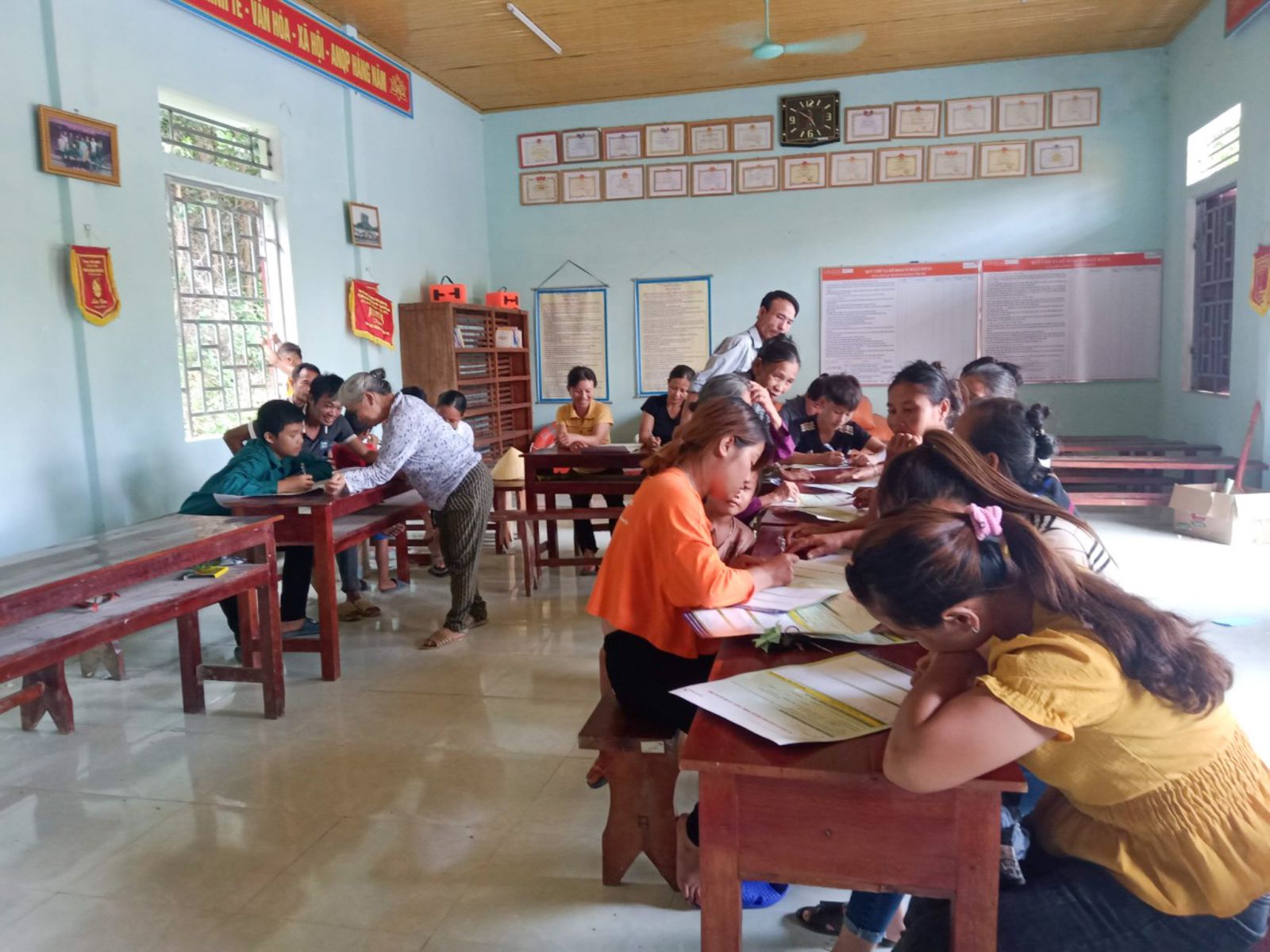
With the community-based approach, World Vision prioritised capacity training on disaster risk reduction for not only local rapid response teams but also for community members and school children.
With the help of the response team, Mrs. Tuyết’s family preparedness plan, along with a life jacket, was hung neatly right in the main room, outlining important tasks to do before a disaster, from preparing food and shelter for livestock, reinforcing the house, to stocking the essentials for the family. “Our biggest happiness is being able to live in this sturdy house and not having to worry too much when the rainstorm season comes,” Mrs. Tuyết shared wholeheartedly.
In this long-term “co-existence” with the increasingly unpredictable and challenging weather, World Vision also encouraged participation from children and youth through regular training at project primary and secondary schools on emergency protocol rehearsals, first-aid, and protection before, during, and after disasters. These “junior forces” would play an essential role in implementing disaster risk reduction efforts in their own communities. “Thanks to World Vision’s summer swimming class, I know how to swim now. Water rising doesn’t terrify me anymore,” Anh Tuấn “showed off” proudly.
“With World Vision Việt Nam’s practical and timely support, such as life jackets, canoes, and livelihood interventions, we were able to implement the Government’s protocol in emergency response, especially for disadvantaged households in this low-land area whose well-being and living conditions are constantly compromised by extreme weathers. We hope that in addition to the current interventions, World Vision will continue their support in strengthening these vulnerable members’ livelihood capacity and, ultimately, their resilience to disasters,” Mr. Lê Khắc Toản, representative of Hoá Quỳ Commune’s People’s Committee, shared.
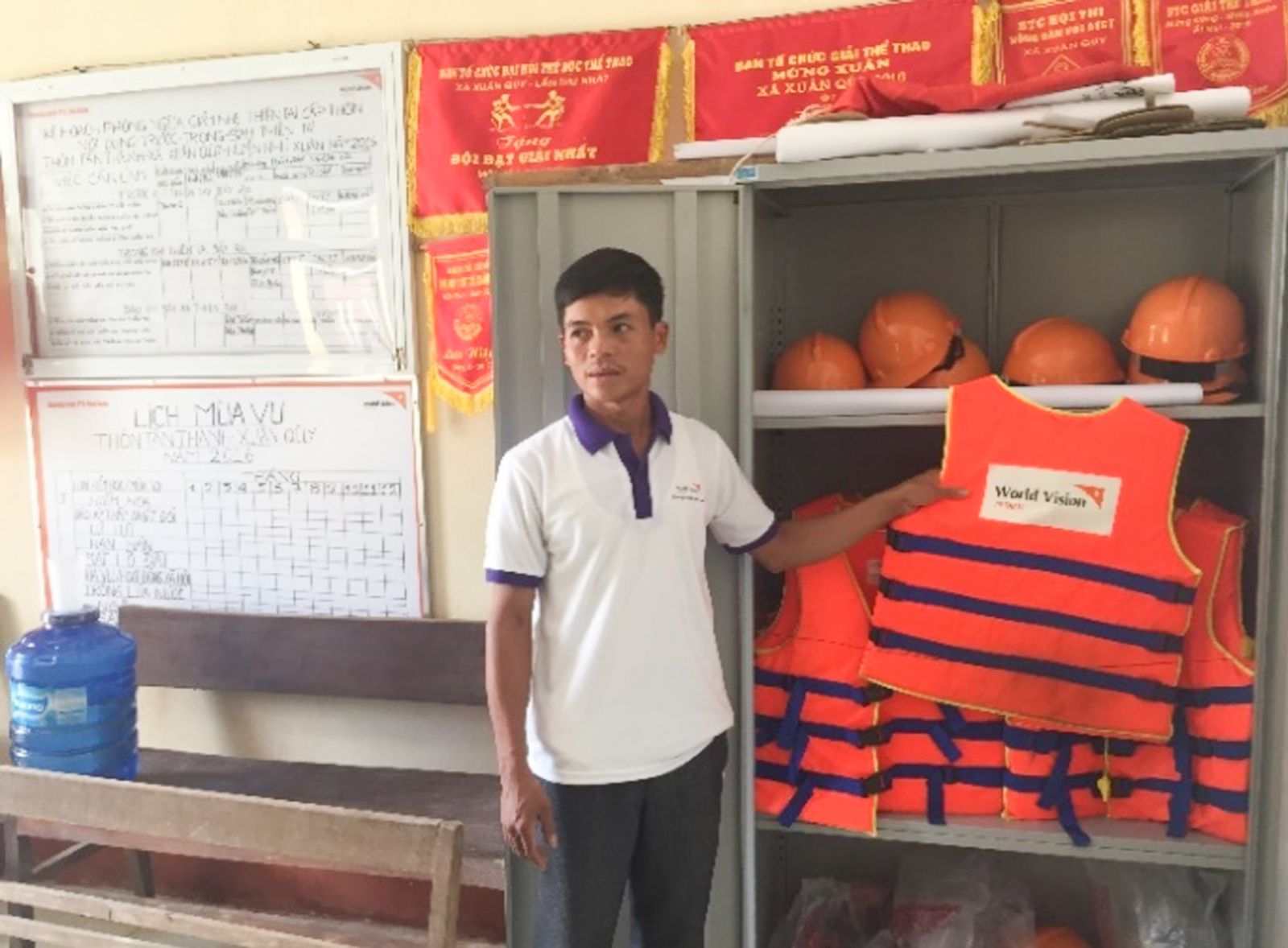
Như Xuân’s rapid response teams were equipped with World Vision’s regular training sessions and support for rescue supplies
“Since 2016, World Vision Việt Nam has been supporting Như Xuân district designing and implementing disaster risk reduction with the participation of local authorities, community members, vulnerable households, and especially, children. This approach has proved its effectiveness in identifying risk factors and planning practical, suitable solutions for each location and entity in disaster risk reduction and production adjustment for climate change. Our partners value this practice and will expand it beyond the project communes in the near future,” Mr. Cao Phan Việt, Như Xuân Area Program Manager, World Vision Việt Nam, shared.
With the increasingly complex nature of climate change, Việt Nam is among the most affected countries by extreme climate events and suffers from severe loss and damage. To address this situation, World Vision Việt Nam has been working closely with international, national, and local partners to provide immediate emergency relief and recovery programs, long-term livelihood interventions, and capacity training to help the community enhance resilience against disasters and climate change. Such efforts aim to ensure the well-being of children and community members, especially the most vulnerable ones like Mrs. Tuyết.

